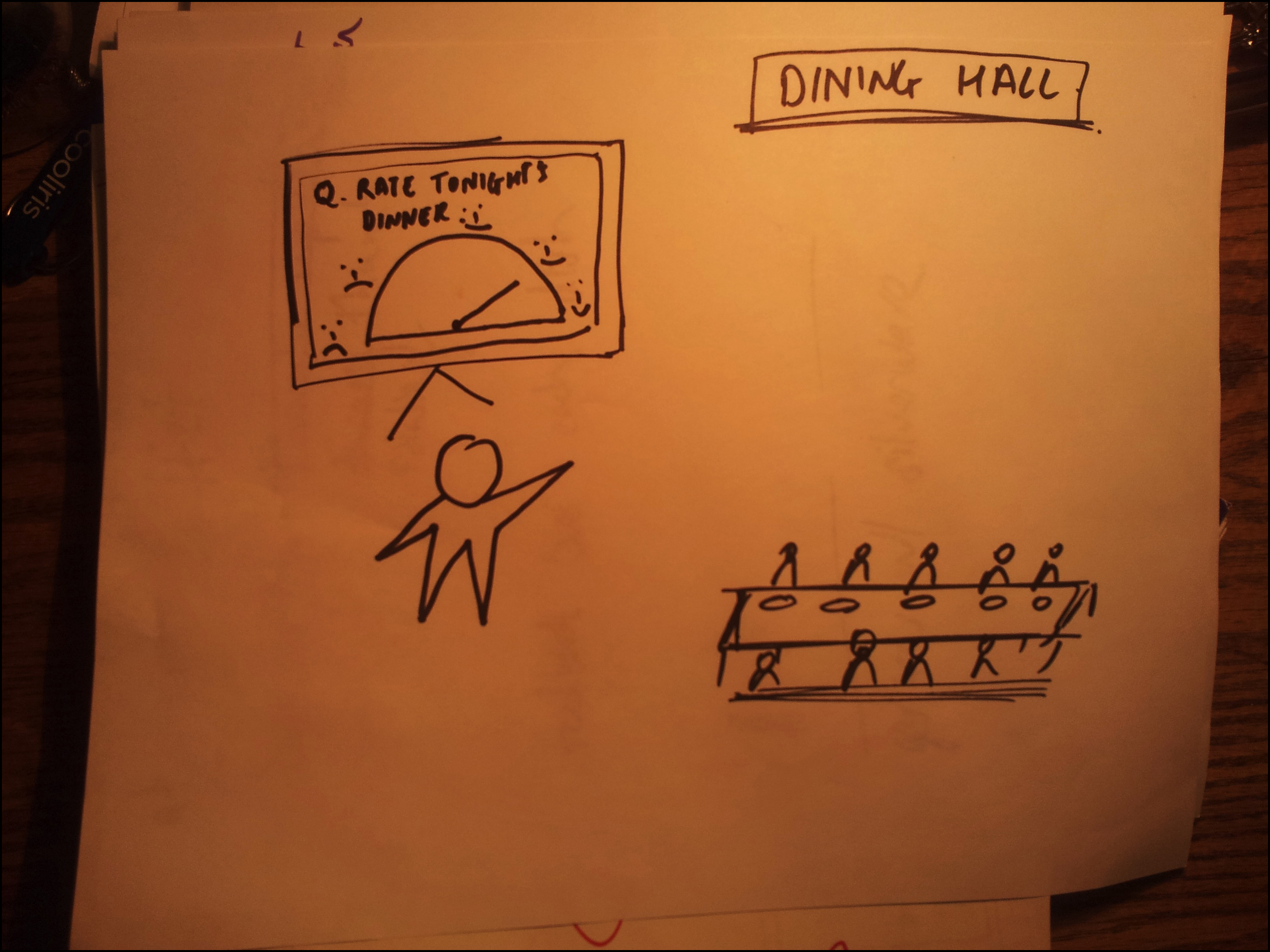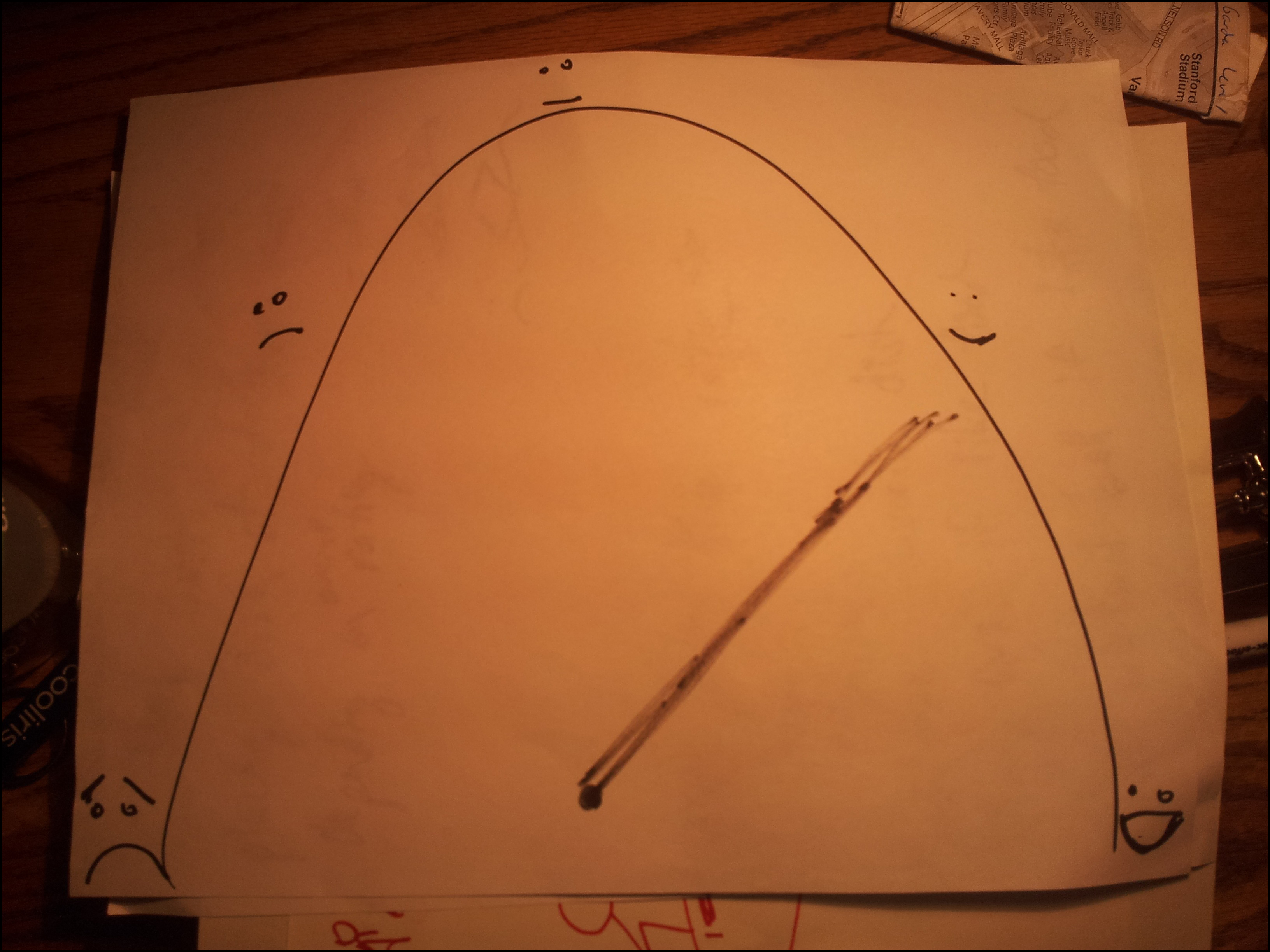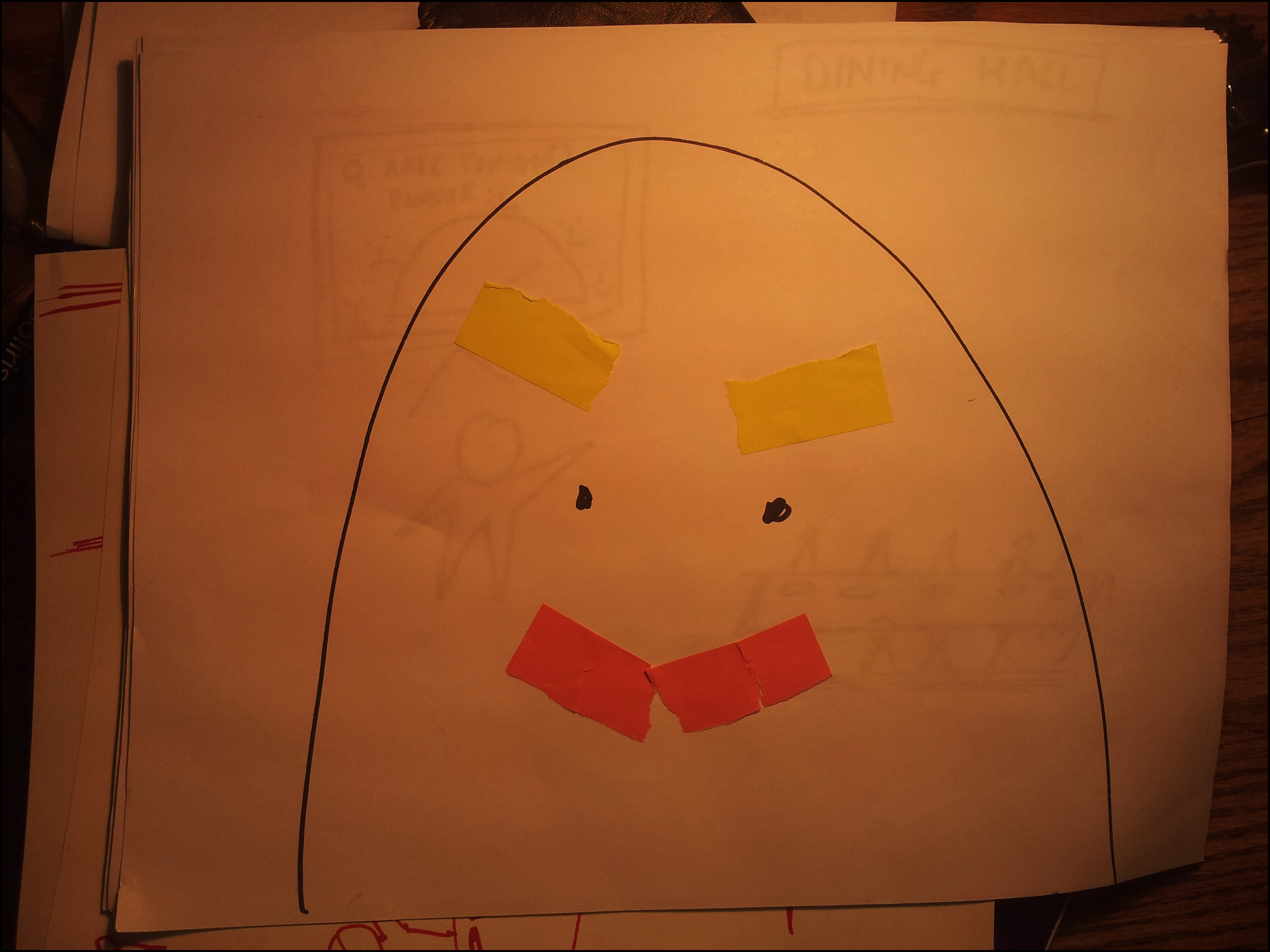Ideation



Every idea is born of many ideas. These ideas come from real-world observations, needs found by watching people from new perspectives.
We started in kitchens, dining areas, and restaurants, observing the cooks as they prepared meals for a variety of different group sizes,
from individual to campus-wide. The thing about need finding is you're not always the only one looking. So when we learned how many
other people were working on cooking-centered applications, we decided a change in direction was in order. But rather than starting from
scratch, we mined our observations and found something unique. The mediums we have for feedback are flawed; you have to incentivize
people to fill out surveys and rate their experiences, and when they choose to do so, it's almost always bad. How can we make feedback
a natural part of experiences and something people might want to do? That's the problem we aim to solve. After a few initial brainstorming
sessions, we aimed to think of some designs that would fulfill the needs of being able to rate food and give the chef some personal
satisfaction while being something that would be better with gestures than say, a standard survey in a browser.
We considered that rating is actually a general application. So we started thinking about implementing systems at the DMV, Registrar's
office, airport, banks, massive concerts, sporting events, campus parties and more. We then decided to narrow down our choices to the
row houses at Stanford because we have a rich amount of observational data and it's more likely that we could do rapid iteration in
context there. (Imagine the permits required to test this at the airport in contrast).
Rapid Prototypes



We iterated through lots of ideas of what a gestural feedback system might look like. It became apparent as we ran through ideas that
we needed to focus on those ideas that involved natural gestures and could be integrated into the natural flow of the dining experience.
People are already not inclined to give feedback, so the only kind of successful system is one that will make giving feedback a natural
component of experiences. Some ideas first included: using your arms to rotate a rating dial on the screen and using your body to do the
same (leaning). After talking with the instructors about making this better than a web interface, our ideas broadened greatly. Our next
round of ideas included: putting your tray back in different bins so as to rate the overall quality of your food with a gesture,
getting a depth image of your dirty tray to see what you didn't eat (if anything), ringing a virtual bell on the way out to indicate you
liked the food or appreciated the chef (as is done in India at Pizza Hut restuarants but with a real bell!), high-fiving something on
the way out with the same purpose, voting with your silverware at the table, voting with your cup at the table, moving food items into
good or bad piles either in line or after you finish eating, using different lines to return your dirty dishes depending on your
contentment level, using a smart phone app with a rating scale that would use a finger gesture, and using leap motion for a discrete way
to give ratings such as a little thumbs up or down.
In-Depth Prototypes
Through the process, we decided none of these systems were really natural or could be incorporated into the natural flow of the
dining experience. So we developed the following three prototypes in the hopes that they would integrate more readily. The first
is a system that would project onto users' tables and would have them "cheers" over dishes they enjoyed. The second has users
high-fiving dishes they enjoyed, putting an 'X' on those they didn't, and skipping the rest. The third is a sort of bucket
system where users categorize their meal into either good or bad stacks. Click on the menu tabs to the left for more detail about
each prototype.
